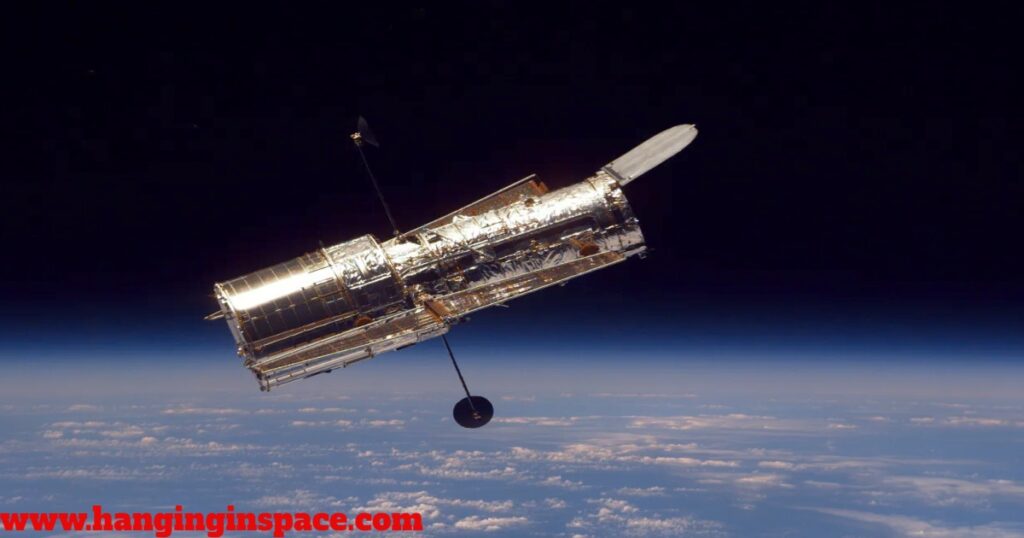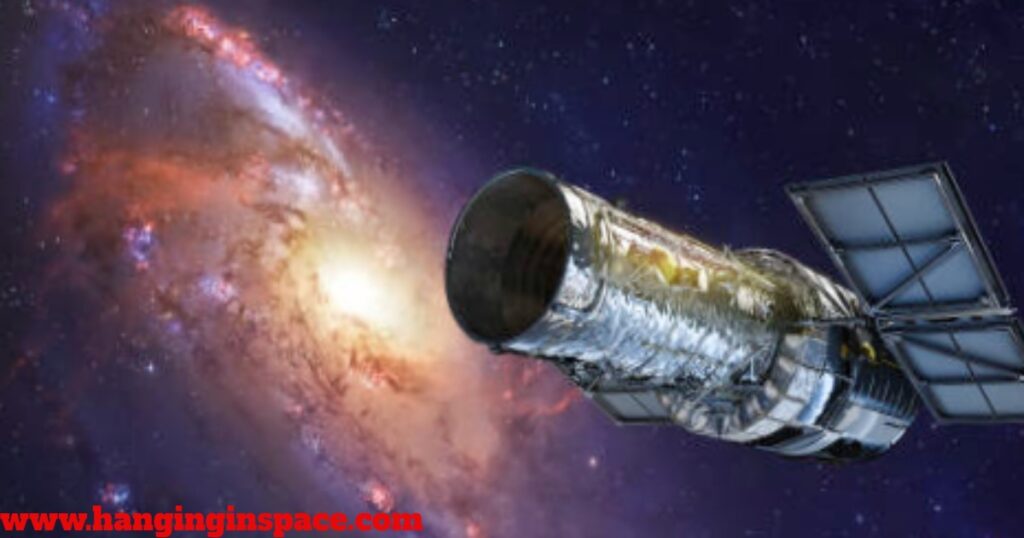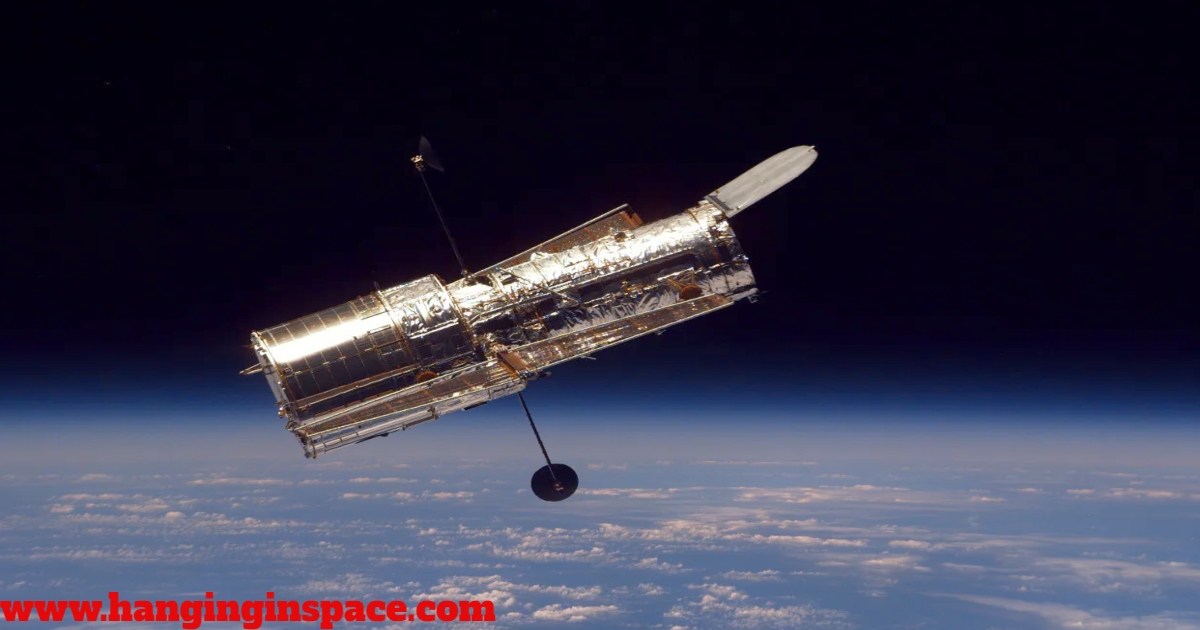The Hubble Space Telescope is a collaborative effort between NASA and the European Space Agency (ESA), bearing the name of the eminent astronomer Edwin Hubble.
The Hubble Space Telescope (HST) was launched into orbit on April 24, 1990, from the Kennedy Space Center in Florida, United States. It was carried into space aboard the Space Shuttle Discovery during the STS-31 mission.

This historic launch marked the beginning of Hubble’s journey to explore the cosmos and revolutionize our understanding of the universe. To achieve its scientific goals, it uses the resources and experience of several countries.
What are the Goals and Scientific Purposes of the Hubble Space Telescope (HST)?
Observing the universe at a wide range of wavelengths, from ultraviolet to near-infrared, is the main goal of the Hubble Space Telescope. This allows astronomers to examine celestial objects and events with extraordinary clarity and precision. With a variety of cutting-edge instruments at its disposal, the HST seeks to accomplish numerous major scientific goals, including:

Galactic Studies:
The Hubble Space Telescope has given astronomers valuable information about the structure, evolution, and dynamics of distant galaxies. Scientists now have a better understanding of how galaxies originate, where dark matter is found, and what function supermassive black holes play in the centers of galaxies, thanks to Hubble’s findings.
Astronomical Research:
The life cycle of stars, from their development in stellar nurseries to their catastrophic deaths as supernovae, has been revealed by Hubble’s views of stars. Astronomers may now examine the features and attributes of individual stars in our own Milky Way Galaxy thanks to comprehensive photos that Hubble has supplied.
Cosmic Expansion:
Hubble’s determination of the rate of cosmic expansion, or the Hubble constant, is one of his most important contributions to cosmology. Hubble has contributed to improving our knowledge of the age, size, and pace of expansion of the universe by viewing far-off galaxies and measuring their redshift.
Planetary Exploration:
Hubble has been instrumental in helping us understand the planets and moons of our solar system, including Mars, Jupiter, Saturn, and others. Hubble’s observations have advanced our knowledge of planetary science by shedding light on planetary atmospheres, weather patterns, and geological aspects.
What are the Discoveries of the Hubble Space Telescope (HST)?
The Hubble Space Telescope has changed our understanding of the universe with several ground-breaking discoveries made throughout its three decades of operation. Among its most noteworthy accomplishments are:

Age of the Universe:
Hubble helped astronomers refine the estimated age of the universe to around 13.8 billion years old, roughly three times the age of Earth.
Expansion Rate:
By studying distant supernovae, Hubble provided crucial data on the accelerating expansion of the universe, a concept supported by dark energy.
Galaxies:
Hubble revealed a vast array of galaxy types, from majestic spirals to chaotic irregulars, and played a key role in understanding galactic evolution. It also provided evidence for the existence of supermassive black holes at the centers of most galaxies.
Dark Matter:
Hubble’s observations of galaxy rotation curves helped solidify the theory of dark matter, a mysterious substance that makes up most of the universe’s mass but cannot be directly observed.
Planetary Systems:
Hubble captured the first direct images of exoplanets (planets outside our solar system), paving the way for further exoplanet discoveries.
Deep Field Images:
Hubble’s deep field observations peered into the distant universe, revealing galaxies billions of light-years away and providing insights into the early formation of galaxies and stars.
Birth and Death of Stars:
Hubble has captured stunning images of stellar nurseries, star formation processes, and the dynamic death throes of massive stars in supernovas.
Nebulae:
Hubble has provided detailed views of nebulae, vast clouds of gas and dust where stars are born and die, offering insights into stellar evolution and the composition of interstellar material.
Our Solar System:
Although primarily focused on deep space, Hubble has also studied objects within our solar system, providing valuable data on planets, moons, asteroids, and comets.
What is the current Location of the Hubble Space Telescope – HST?
Hubble is currently located 326 miles (525 km) above Earth’s surface. This orbit allows Hubble to be above most of Earth’s atmosphere, which would otherwise distort its observations. It races around Earth at about 17,000 miles per hour (27,000 kilometers per hour).
Conclusion:
In conclusion, the Hubble Space Telescope has revolutionized our understanding of the universe. As one of humanity’s greatest scientific tools, Hubble continues to inspire awe and unlock space mysteries.
